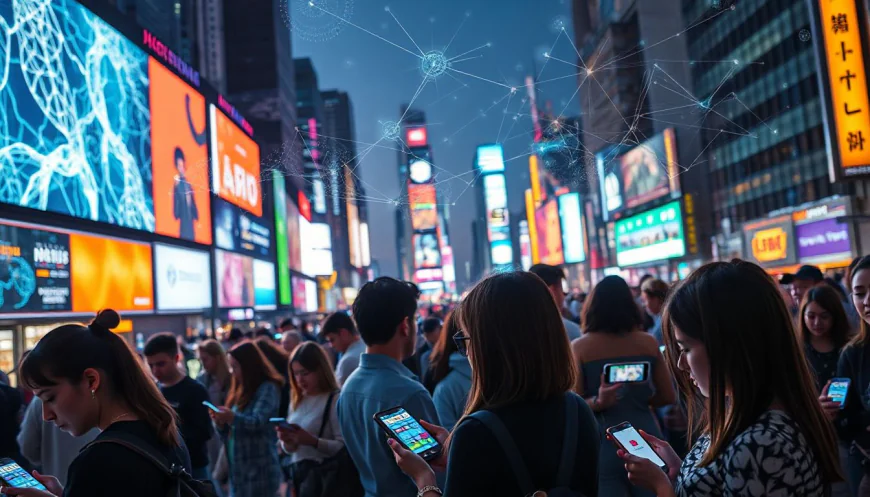Digital Dopamine: How Algorithms Hijack Our Attention
Every time we scroll through social media, open a news app, or click on a video, our brains are doing something amazing—seeking rewards. This process is driven by a chemical called dopamine, often called the "feel-good" neurotransmitter. Digital platforms have turned this natural mechanism into a tool to keep us hooked. Algorithms control what we see and when we see it, playing on our brain's desire for instant gratification. Understanding how these systems hijack our attention can help us protect our mental health and regain control of our time online.

The Science of Digital Dopamine and Human Behavior
Understanding Dopamine and Reward Systems
Dopamine is a chemical messenger that makes us feel pleasure and motivates us to seek rewards. When you eat favorite food or hear a compliment, dopamine floods your brain. It reinforces behaviors, making you want to do them again. Digital platforms exploit this system by designing features that trigger dopamine releases, encouraging us to stay engaged longer.
How Algorithms Trigger Dopamine Releases
Every like, comment, or notification acts as a mini reward, sparking dopamine in your brain. If you get a positive comment, your brain releases a burst of dopamine, making you feel good. Social media apps use these cues to keep us scrolling, checking for that next hit of validation. Research shows that social media use rapidly increases dopamine activity, similar to the effects seen in addictive substances.
The Psychological Impact of Digital Rewards
This constant cycle can lead to addiction-like behavior. People become compulsive users, unable to resist checking their devices repeatedly. Experts compare this to substance addiction because it creates habit-forming patterns. Over time, relying on digital rewards damages focus, mood, and even self-esteem. The line between enjoyment and dependency gets blurry when dopamine-driven rewards control your habits.
The Mechanics of Attention Hijacking by Algorithms
Personalization and Content Optimization
Algorithms study every click, like, and watch time to predict what we’ll enjoy next. They craft tailored feeds that keep our eyes glued. By understanding individual preferences, these platforms maximize engagement, often at the cost of our time and mental well-being.
The Role of Intermittent Reinforcement and Variable Rewards
Ever wondered why you keep checking your phone? It’s because of intermittent reinforcement—rewards that come randomly. Sometimes, a post gets many likes; other times, none at all. This unpredictability keeps us hooked, just like slot machines in a casino. Platforms capitalize on this by offering unpredictable rewards that make us want to keep scrolling.
Design Strategies That Capture Attention
Features like infinite scrolling, autoplay videos, and endless notifications are no accident. These UI choices trap us in a loop of compulsive use. Easy-to-access push notifications tell us “something new just happened,” pulling us back again and again. These design tricks are crafted to intensify our desire to stay engaged, often at the expense of our focus and productivity.
Real-World Impacts of Algorithm-Driven Attention Hijacking
Effects on Mental Health and Well-being
Excessive screen time linked to heightened feelings of anxiety and depression. Studies show that constant exposure to social media can lead to loneliness and poor self-image. Mental health experts warn that these platforms manipulate our emotions, making it harder to find genuine happiness.
Impact on Productivity and Focus
When notifications ping every few minutes, our attention gets fractured. Concentrating on tasks becomes hard, and deep work feels almost impossible. Research reveals that frequent interruptions can reduce productivity by almost 40%. The more distractions, the thinner our attention spans become.
Societal and Cultural Consequences
Social media shapes opinions and spreads misinformation fast. Algorithms tend to prioritize sensational content, deepening divisions. This leads to echo chambers and increased polarization. Studies link these dynamics to real-world societal problems, like political conflicts and spread of false news.
Strategies to Regain Control of Digital Attention
Setting Boundaries and Time Limits
Tools like app timers or digital well-being settings help you limit gebruik. Try setting designated offline hours or specific screen-free zones. Small routines, like turning off notifications or taking regular breaks, can break the habit of endless scrolling.
Cultivating Digital Awareness and Mindfulness
Being aware of your digital habits is a step toward change. Practice mindfulness to notice what triggers your urge to check your phone. Once aware, you can choose to engage intentionally, rather than react automatically. Focus on content that adds value rather than mindless consumption.
Designing Ethical Algorithms and User-Centric Platforms
Advocating for transparency means supporting companies prioritizing user well-being. Ethical algorithms should respect privacy and promote healthier engagement. Policies that require platforms to reduce manipulative features can help make digital spaces safer for everyone.
Conclusion
Algorithms are expertly crafted to tap into our dopamine pathways, urging us to keep scrolling and clicking. This manipulation hijacks our attention, often harming mental health and reducing our focus. Recognizing these tactics is crucial in today’s digital world. We must adopt mindful habits, set boundaries, and support platforms that choose ethical design. Only then can we reclaim our time and protect our well-being in an era of endless digital distraction.



 VARSHITHA
VARSHITHA